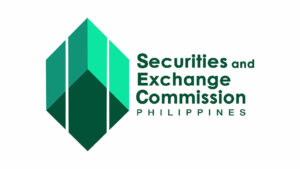SEC adopts sustainable finance taxonomy guidelines

THE Securities and Exchange Commission (SEC) has adopted the Sustainable Finance Taxonomy Guidelines (SFTG) to promote environmentally and socially sustainable economic activities.
In a statement on Tuesday, the corporate regulator announced the issuance of Memorandum Circular No. 5 on Feb. 23, outlining the guidelines on Philippine Sustainable Finance Taxonomy. The SFTG provides a framework for assessing the environmental and social sustainability of economic activities.
“Issuers of securities shall refer to the SFTG when making investment decisions or designing sustainable financial products and services, among others. They must also comply with the relevant memorandum circulars issued by the SEC when issuing green, social, sustainability, and sustainability-linked bonds,” the SEC said.
The SFTG offers a “simplified approach” on the assessment of micro, small, and medium enterprises (MSMEs) activity for financing, the commission said.
The rules also ensure that MSMEs are not excluded from participating in “sustainable finance.”
“With the Philippine SFTG in place, we hope to channel and amplify more capital toward economic projects that further sustainability goals such as lowering greenhouse gas emissions and bolstering climate resilience, while fostering transparency by reducing the likelihood of greenwashing,” SEC Chairperson Emilio B. Aquino said.
Financing of economic activities is deemed environmentally or socially sustainable and aligned with the SFTG if these are not mentioned in the list of excluded activities. Excluded activities include gambling, lethal defense goods, conflict minerals, extractive mining, and military contracting.
Issuers will then choose the environmental objective (EO) of the activity such as its relevance and strategic alignment, investors or financial institutions’ priority, and government and industry guidance.
“Focusing on an EO should not significantly harm other EOs. Should there be harm, the issuer should verify that the same has been remediated or will be remediated within the required defined period,” the guidelines said.
“Regulated entities should refer to the general guiding questions for the do no significant harm (DNSH) to focus assessment on the potential or actual harm to another EO,” it added.
Following the assessment process, economic activities could be classified as green or those with “substantial contribution” to an EO; amber or those with substantial contribution to an EO but causes harm to another, but which can be remediated within five years, or there is a reliable claim that remediation will take less than 10 years; and red, or those that do not meet the criteria.
“An activity that falls under the Red classification does not meet the higher sustainability ambition of the SFTG or pass the DNSH or minimum social safeguards tests. The classification, however, does not imply that the activity is unsustainable; such an activity may still be eligible for unlabeled financing,” the guidelines said. — Revin Mikhael D. Ochave




